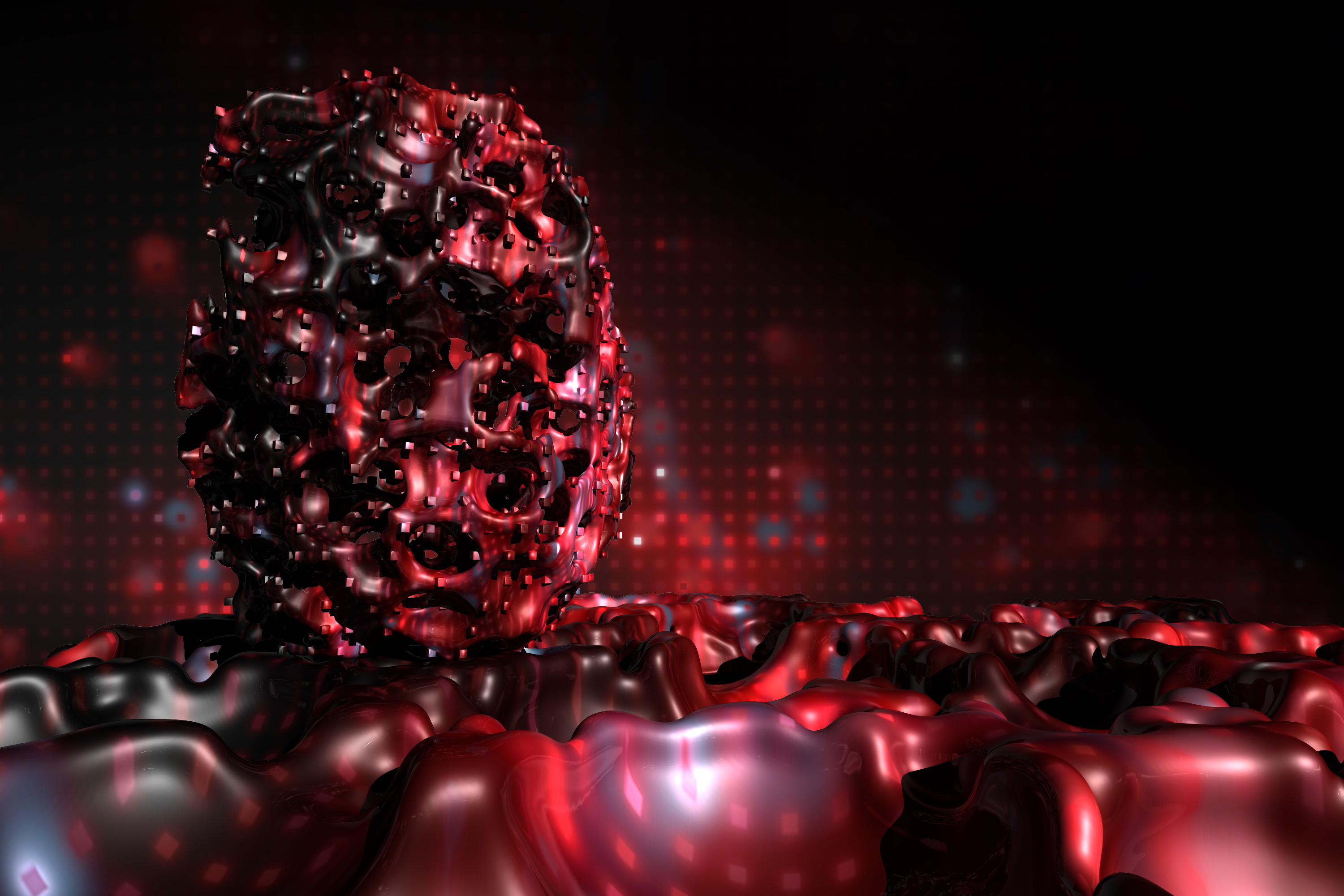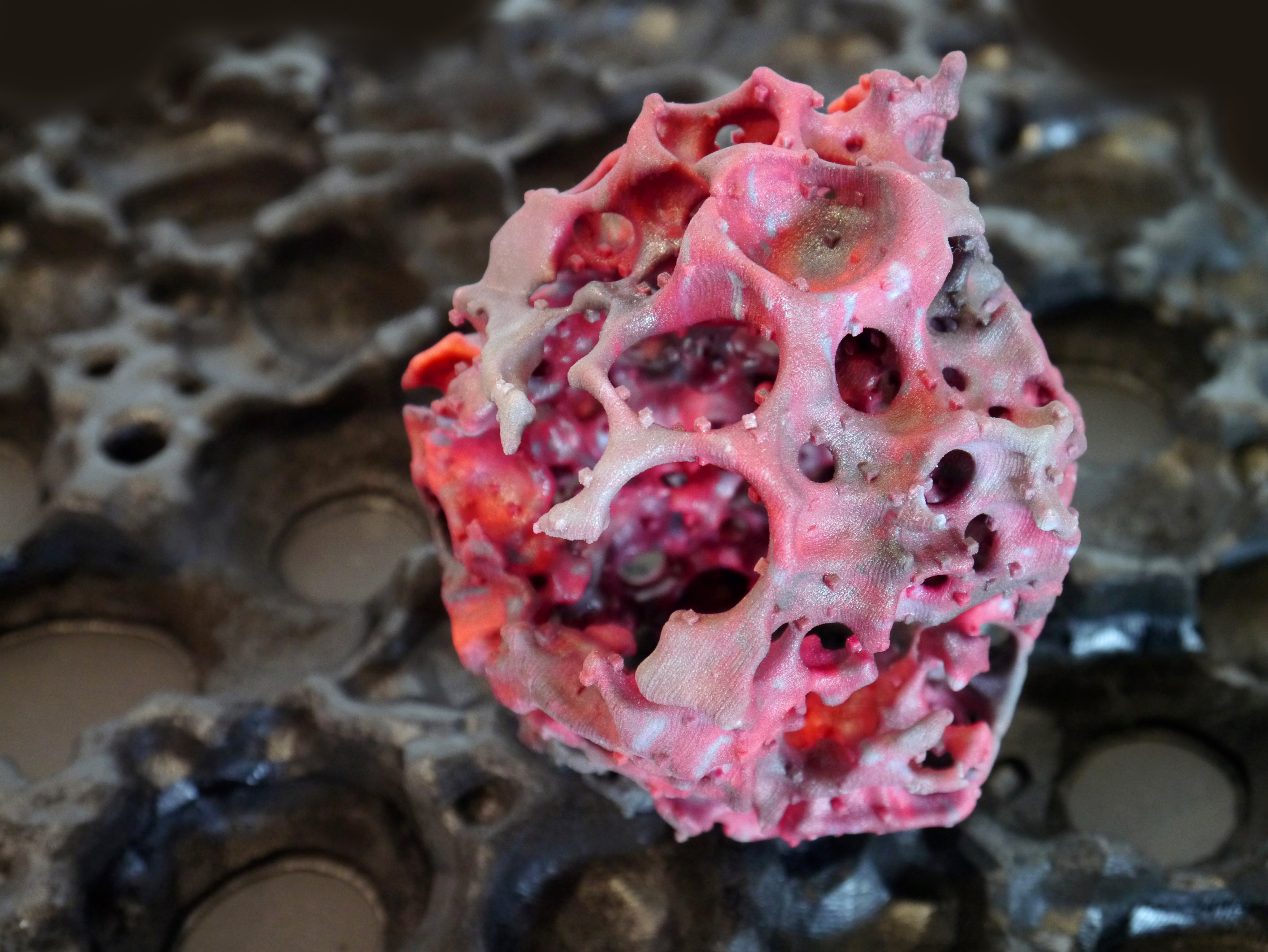WEIRD BISMUTH: GRADUATE STUDIO
WEIRD BISMUTH: GRADUATE STUDIO
Our focus for this project was on creating strange scalar effects and ambiguous joinery / seaming techniques. This object oriented approach to tectonics is directed towards “weird realism” and focuses on the strange.
By combining ancient Japanese joinery techniques with the proto-architectural nature of bismuth crystals, we achieve a panel system in which detail and tectonics become indistinguishable from, and obfuscated by, one another.
Joints and seams are no longer understood as the site of tertiary connections, but rather of fitting, locking, and gluing together. In this way, the design logic of the seam and the surface articulation exist in ambiguity, floating between actual and fake, tectonic and graphic.
By moving back and forth between digital modeling and physical prototyping, we were able to ensure that our design would carry through from the theoretical into the realm of the built environment.



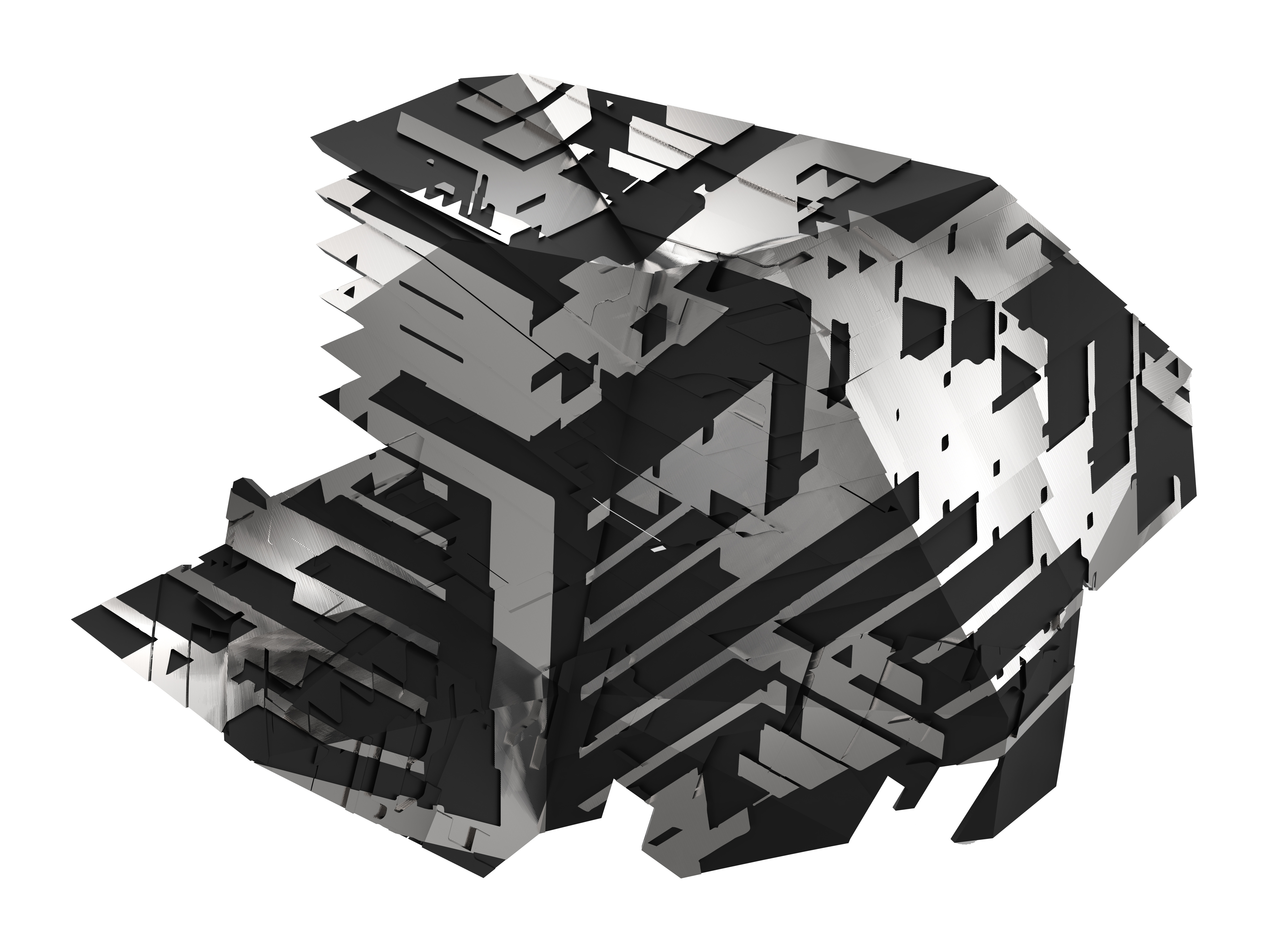




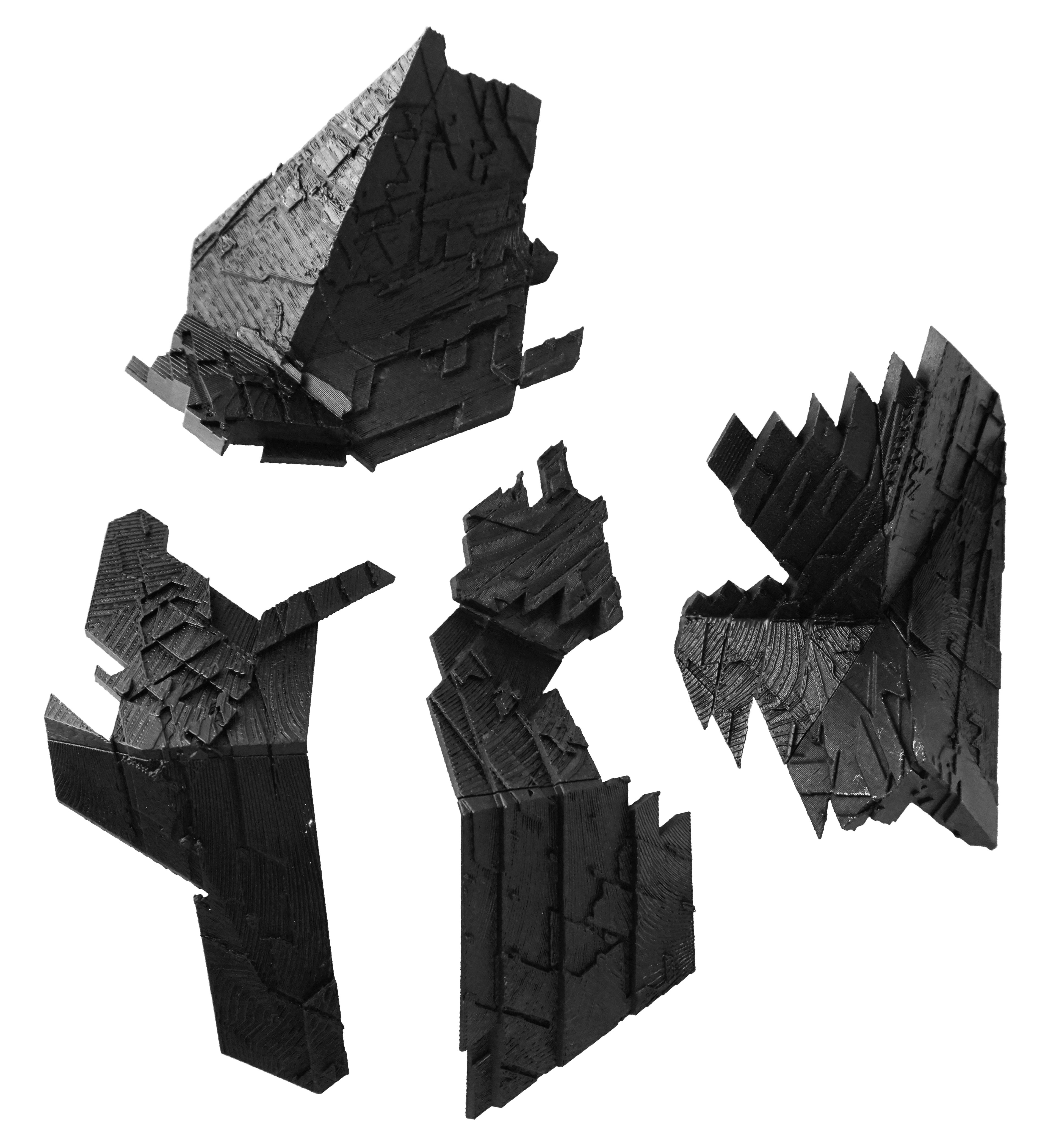
Our focus for this project was on creating strange scalar effects and ambiguous joinery / seaming techniques. This object oriented approach to tectonics is directed towards “weird realism” and focuses on the strange.
By combining ancient Japanese joinery techniques with the proto-architectural nature of bismuth crystals, we achieve a panel system in which detail and tectonics become indistinguishable from, and obfuscated by, one another.
Joints and seams are no longer understood as the site of tertiary connections, but rather of fitting, locking, and gluing together. In this way, the design logic of the seam and the surface articulation exist in ambiguity, floating between actual and fake, tectonic and graphic.
By moving back and forth between digital modeling and physical prototyping, we were able to ensure that our design would carry through from the theoretical into the realm of the built environment.
THESIS: BIGGER ON THE INSIDE
In “t zero”, Italo Calvino tells the story of a man in an impossible prison.
This man Faria is bent on escape, but no matter which way he tunnels,
it always emerges in the cell of Edmond Dantes. Up, down, towards the outside wall,
or deeper into the prison, every direction leads to that same cell with the same Edmond Dantes;
It repeats endlessly though time and space but never emerges from the prison.
“Bigger on the inside” architecturalizes Calvino’s condition of inversion,
in which field is contained within object, in order to displace the interior from its container.
We would assume that a building makes sense when the insides correspond to the outsides.
This thesis manipulates that assumption to achieve spatial and perceptual instability through the creation
of an extreme topological difference between Euclidean and non-Euclidean geometries.
Critic: Elena Manferdini
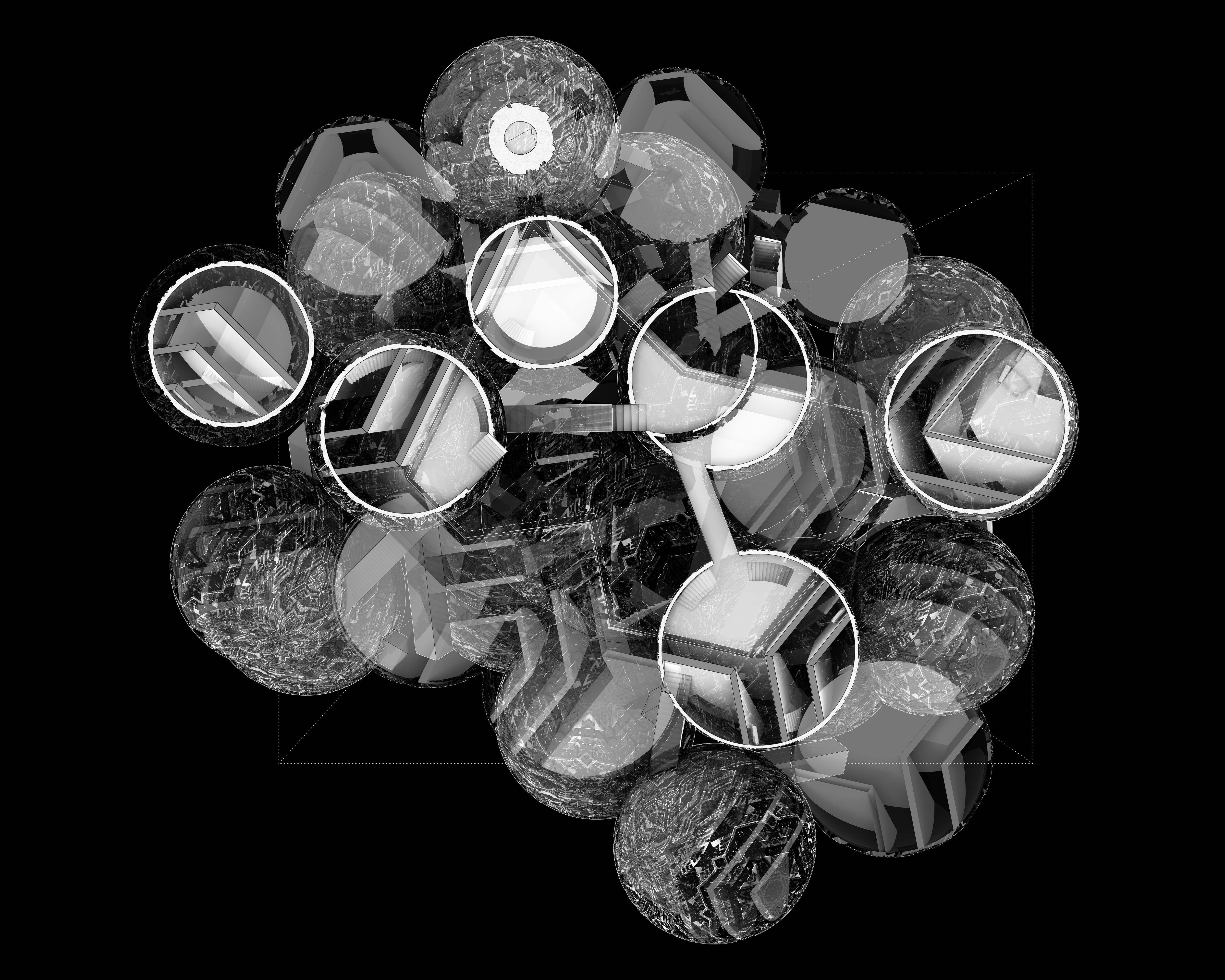
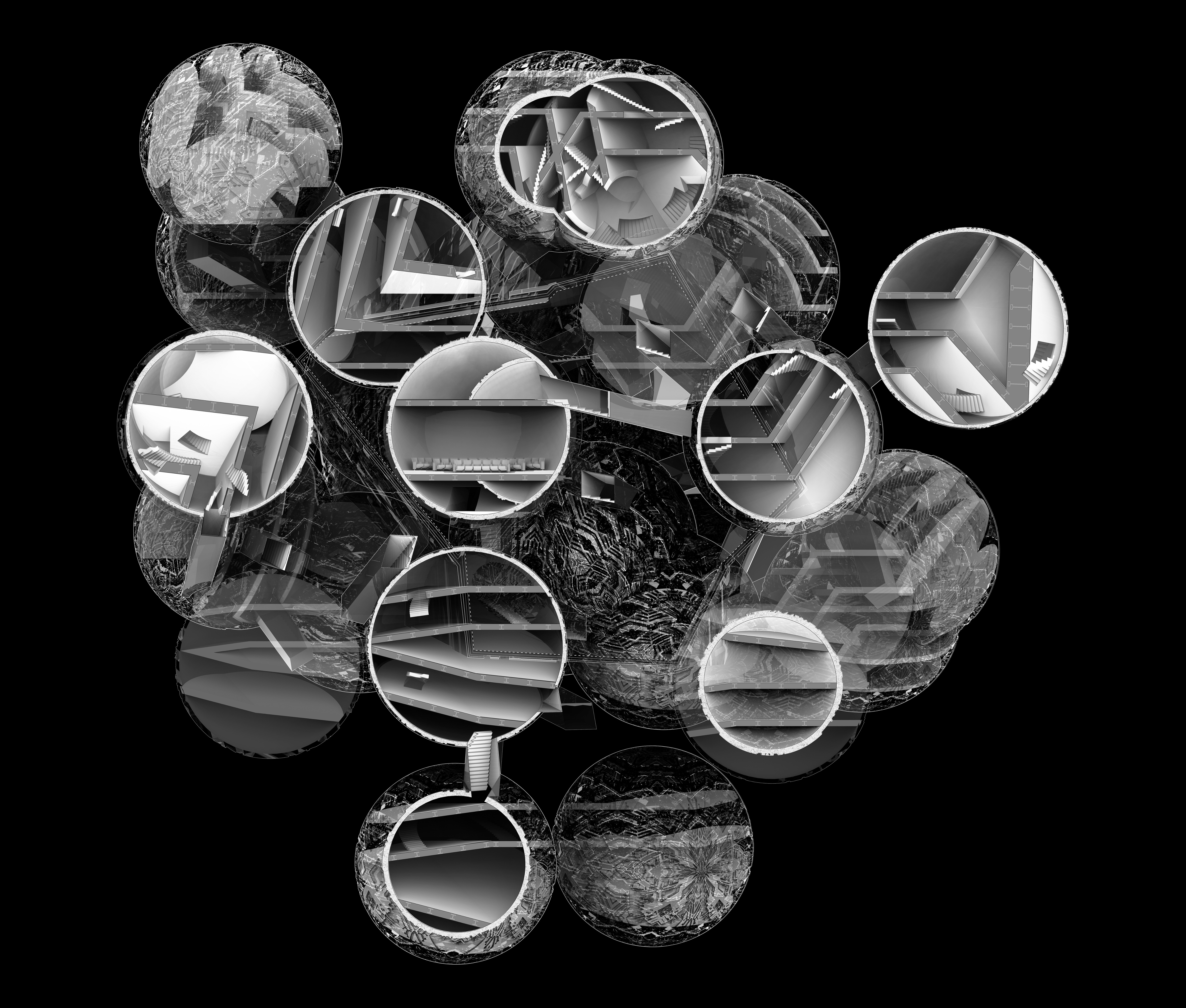

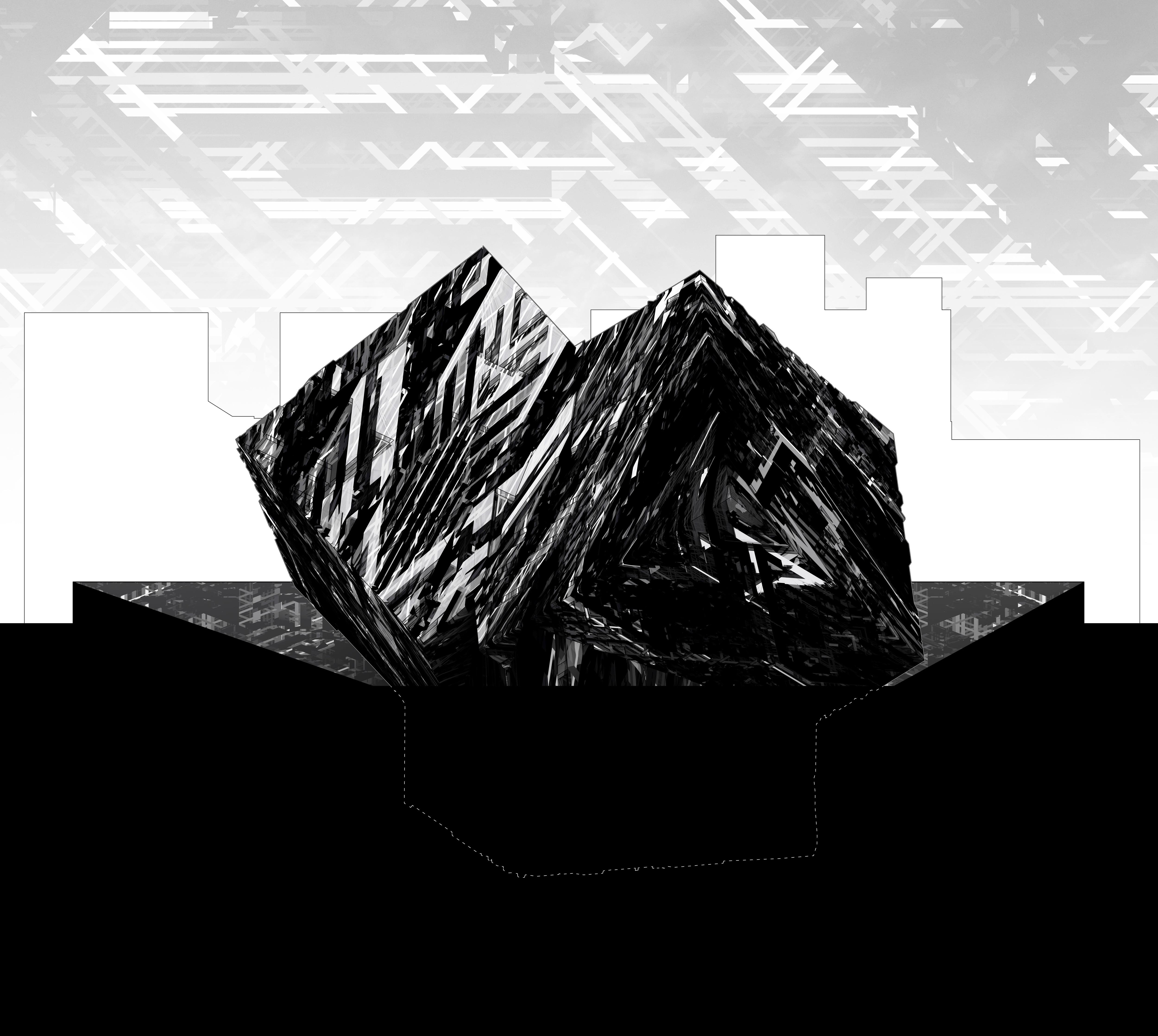
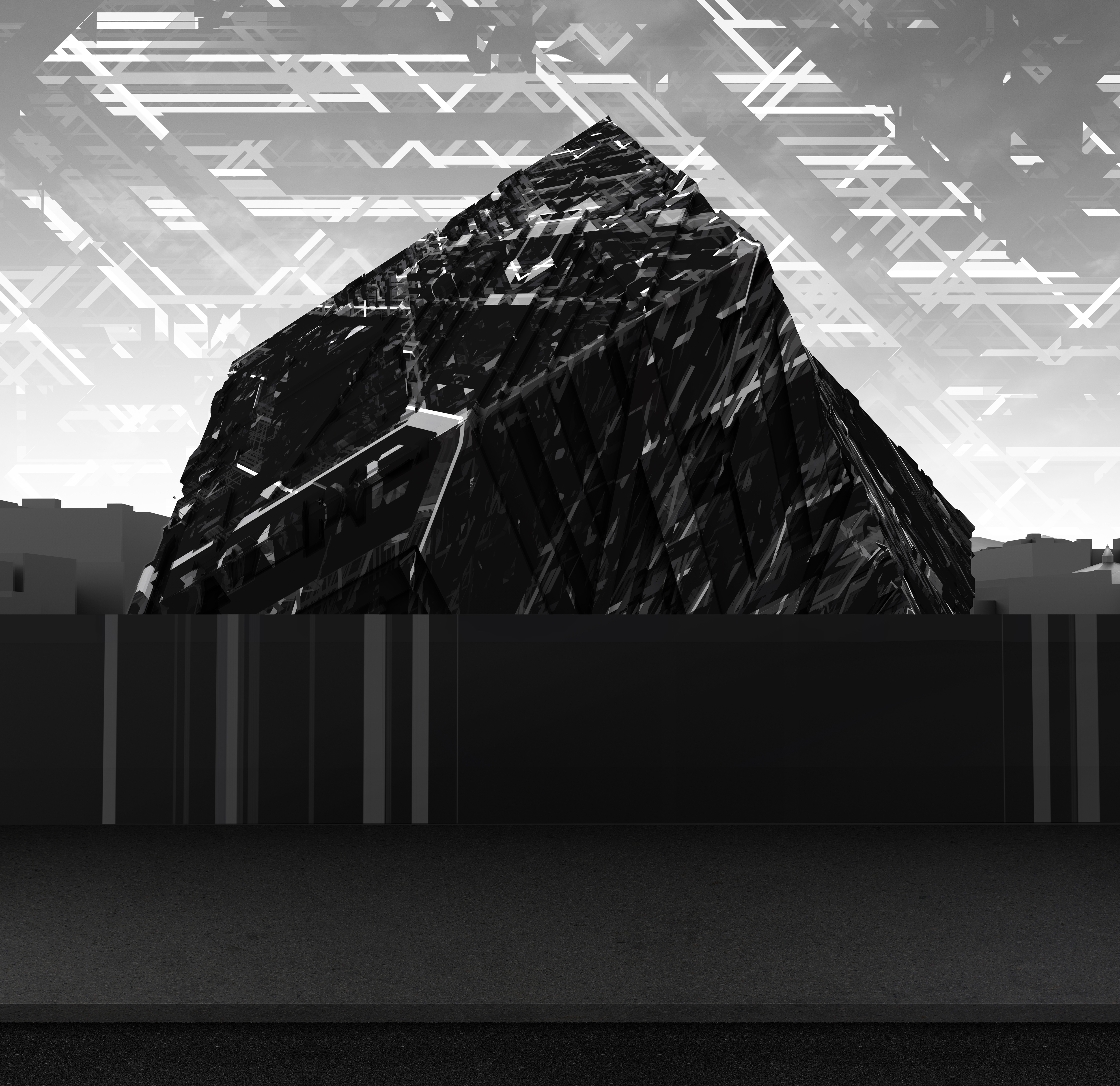


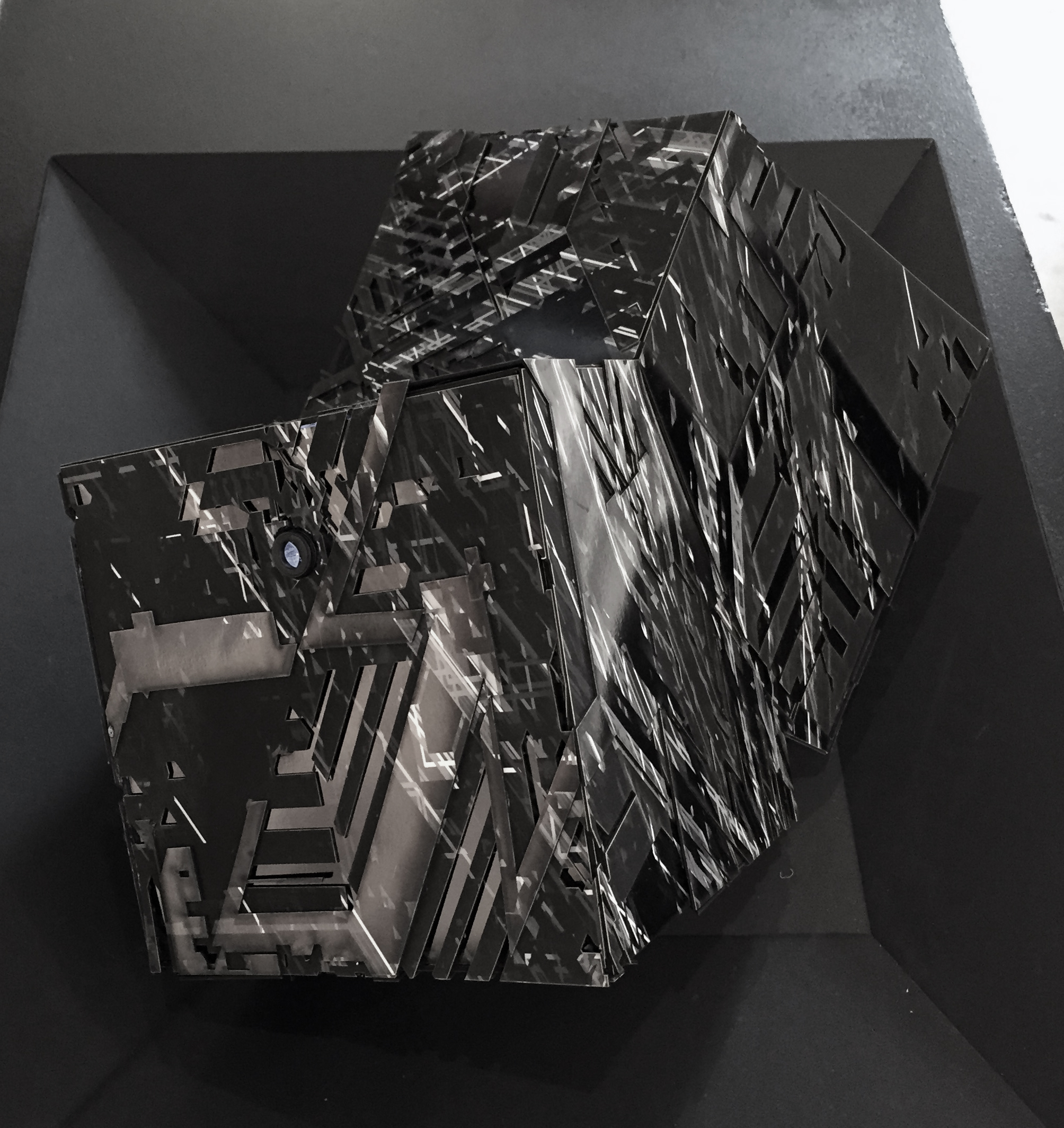

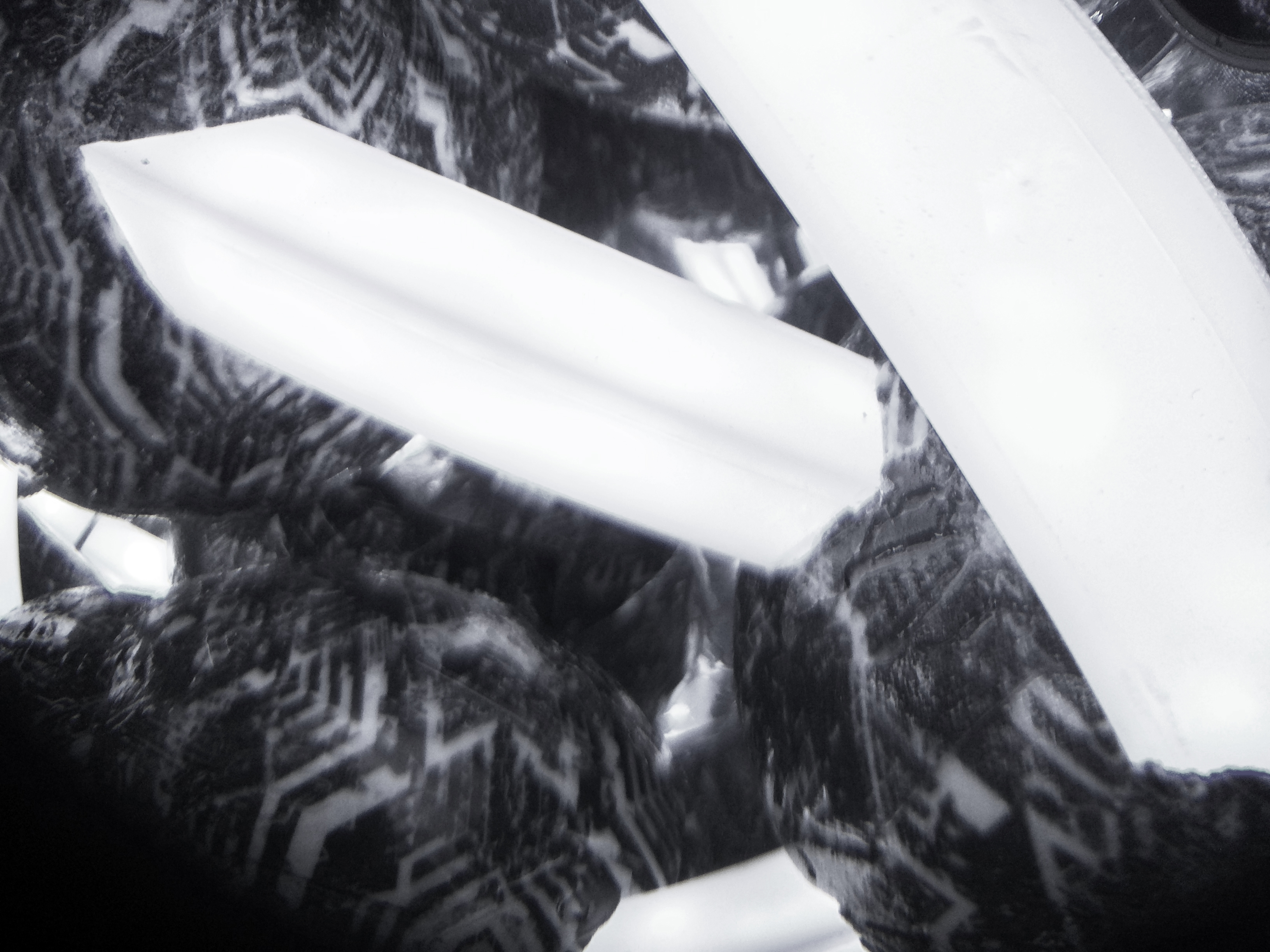


BLACK INVOLUTION
“The things hollow - it goes on forever - and - oh my God! - it’s full of stars!”
- Arthur C. Clarke 2001: A Space Odyssey
The studio was a continuation of work on near figuration through the use of involutions. In this way, distinct and legible objects emerge from illegible and uncertain conditions. Ultimately, what is at stake is the status of the object, its qualities, and our lack of access to them as they withdraw into black interiors.
This proto-architectural shape is the result of graphic and formal features deployed in combination to create involutions: conditions which silmultaneously create the effect of exterior depth and interior spatial figuration.
A threshold is created between inside and out which is not blurred but elastic, and at times uncertain.
The crystaline figures ambigiously sink in and push out of the form at the same time, creating tension between envelope and space. Mystery is created in that not all involutions are points of entry, but moments of a lack of access.
Forms were rendered in a lightstudio environment, 3D printed, and then rearticulated to mimic and enhance the qualities of the image. The models were a method to visualize the prototectonic nature of these rendered effects in the built environment.
This proto-architectural shape is the result of graphic and formal features deployed in combination to create involutions: conditions which silmultaneously create the effect of exterior depth and interior spatial figuration.
A threshold is created between inside and out which is not blurred but elastic, and at times uncertain.
The crystaline figures ambigiously sink in and push out of the form at the same time, creating tension between envelope and space. Mystery is created in that not all involutions are points of entry, but moments of a lack of access.
Forms were rendered in a lightstudio environment, 3D printed, and then rearticulated to mimic and enhance the qualities of the image. The models were a method to visualize the prototectonic nature of these rendered effects in the built environment.
Critic: Tom Wiscombe



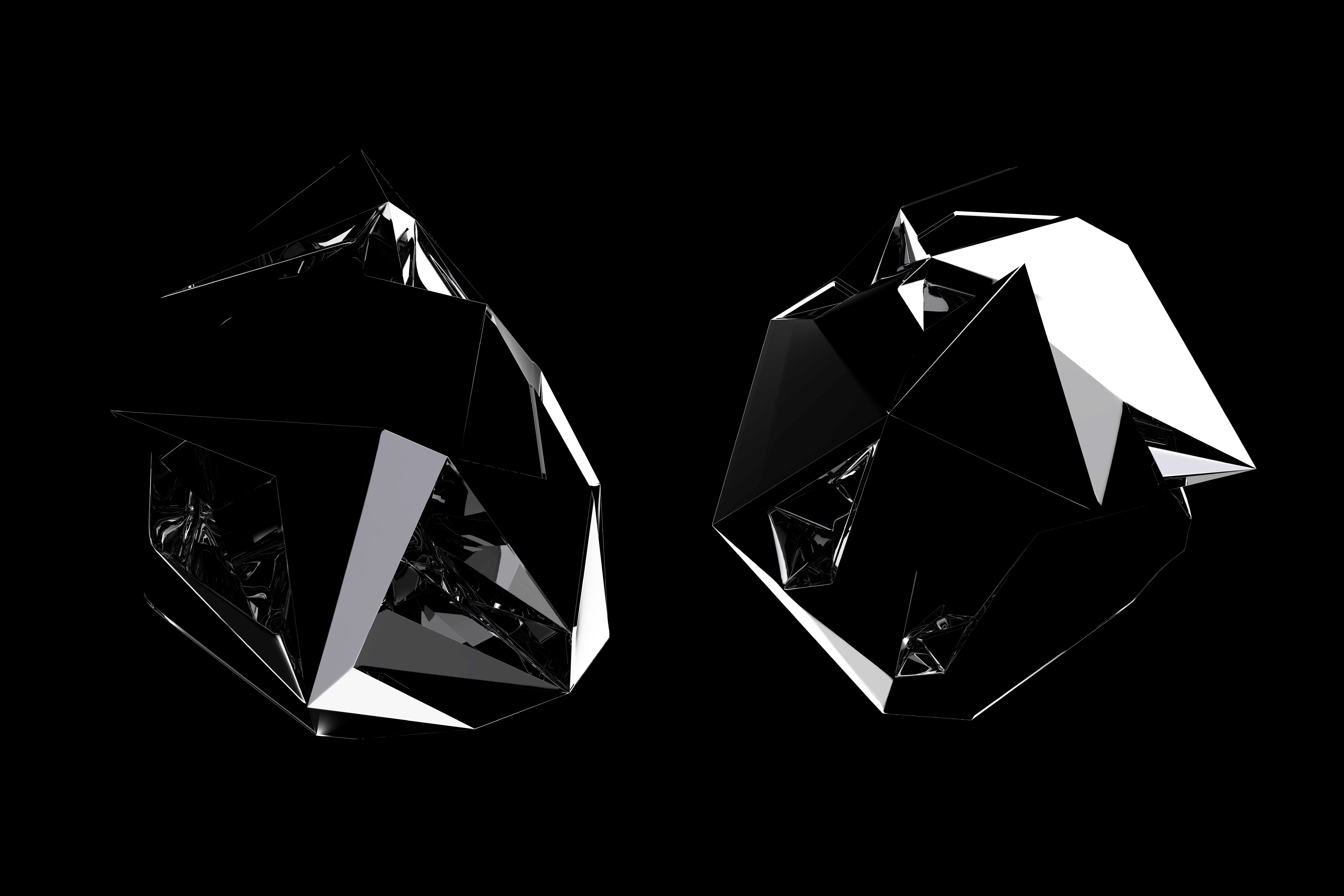


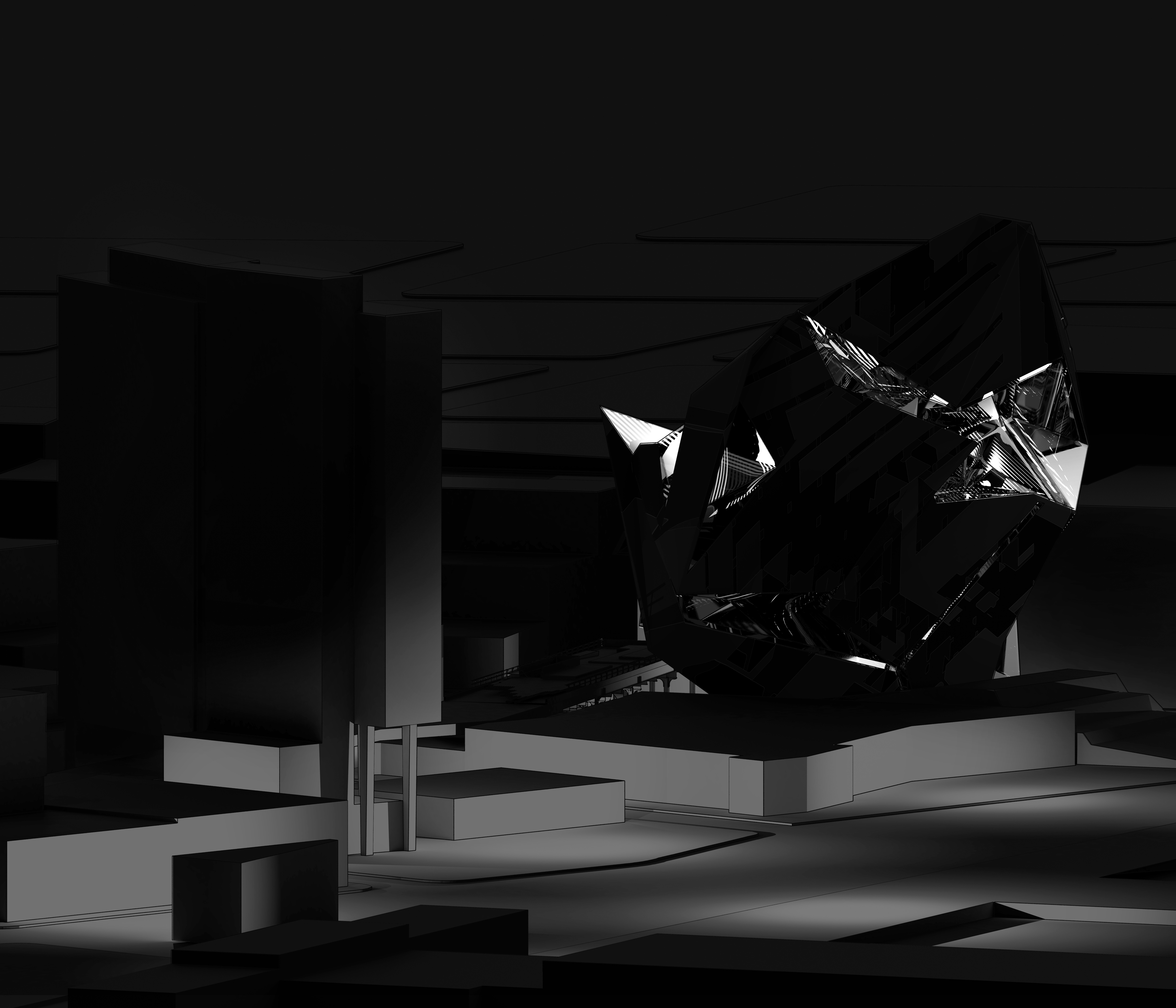

TECTONIC DETAIL MODEL
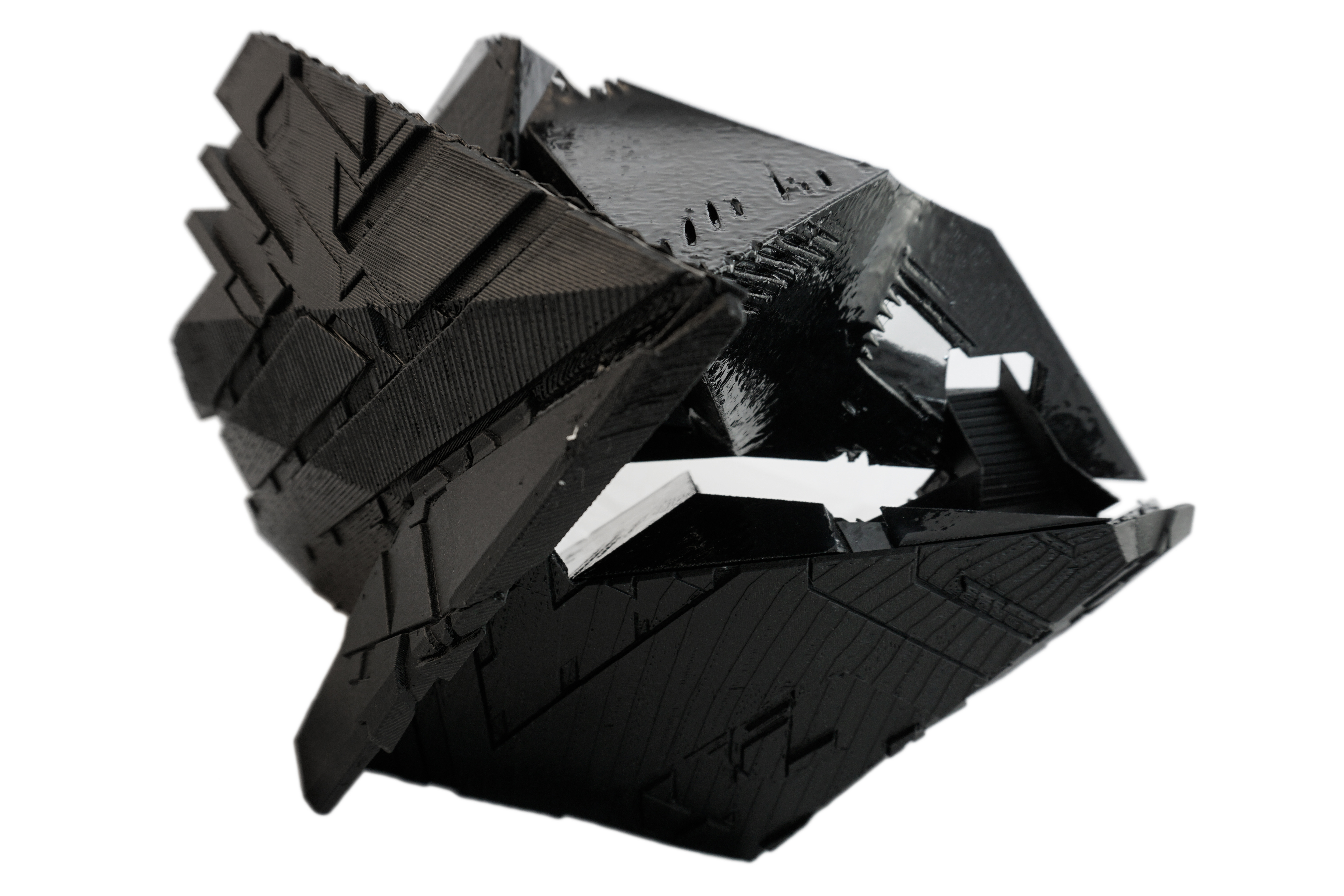
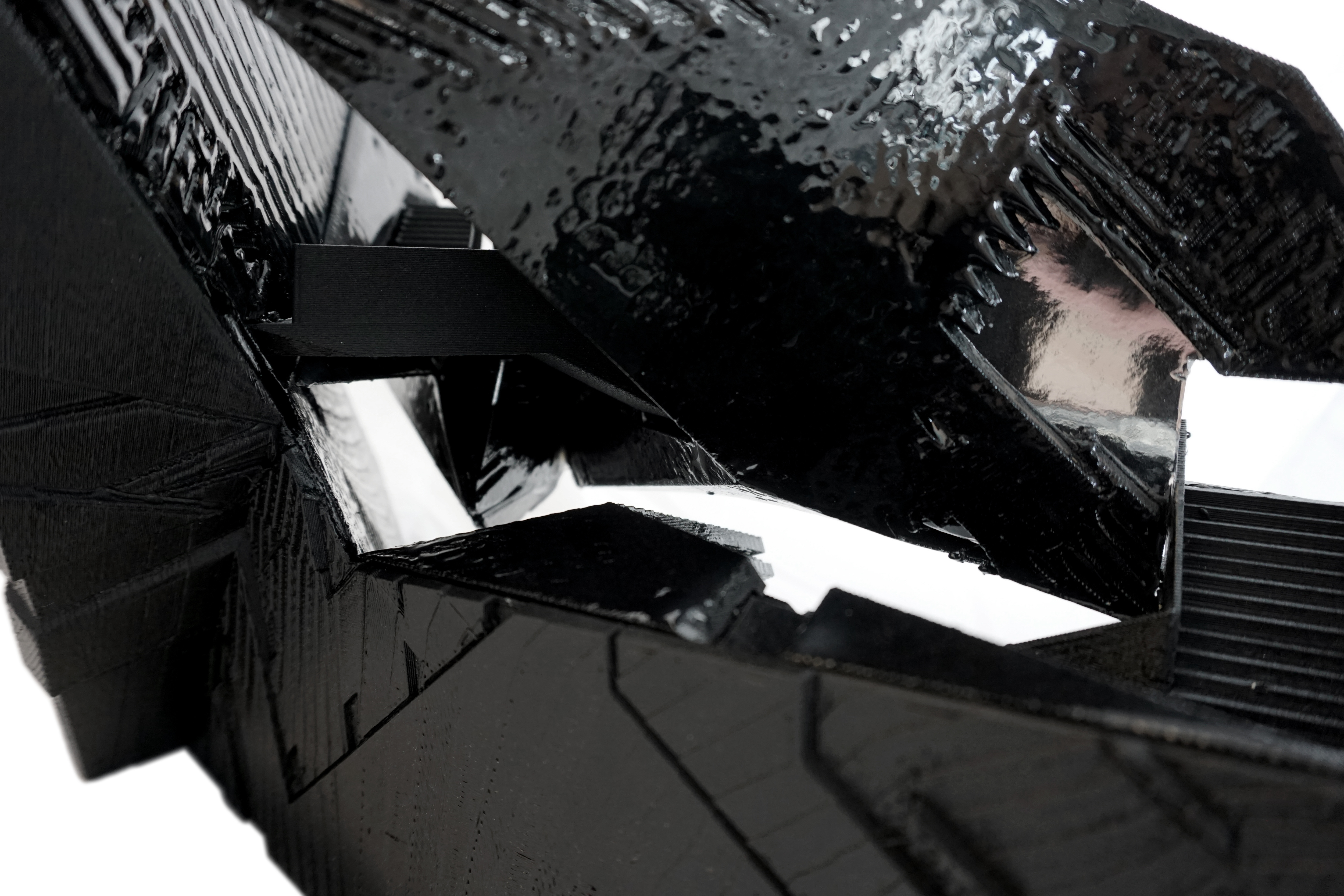

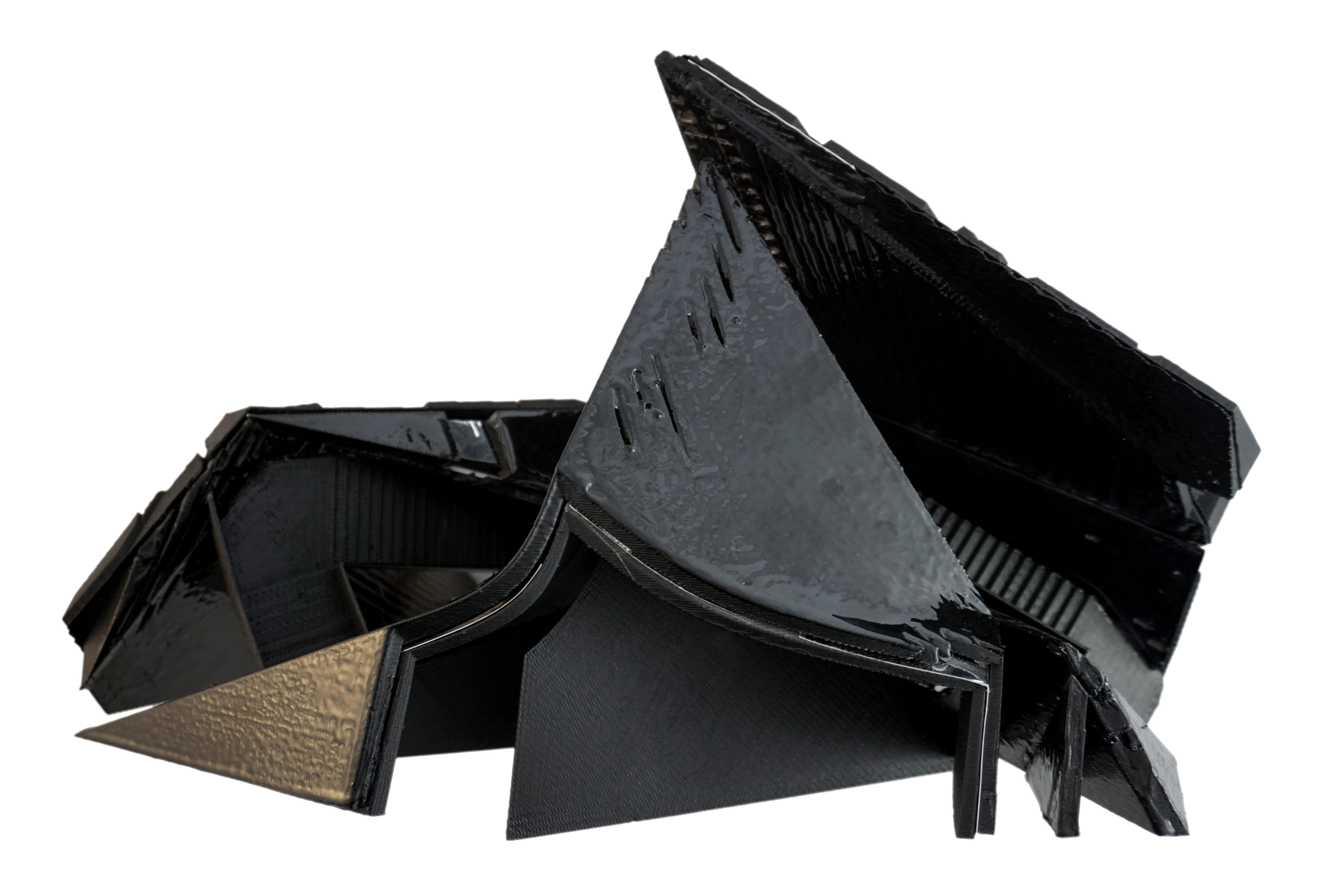

WITHDRAWN FIGURES
A multi-use building in downtown Santa Monica, CA.
Exploration of the studio interest in contextualism takes place in the plaza which creates a bridge through the site; Texture applied to the plaza and building undersides defines this public zone.
Windows are created through projection oriented from the major bordering streets onto the masses. The transition from square to streaked informs circulation from the street to within the site.
Function is separated by building; Office, Hotel and Residential; program within each of these buildings is distributed according to window type. Each building maintains its own iconicity, but the common articulation of massing, scale, and material allow them to register as a set.
Critic: Elena Manferdini




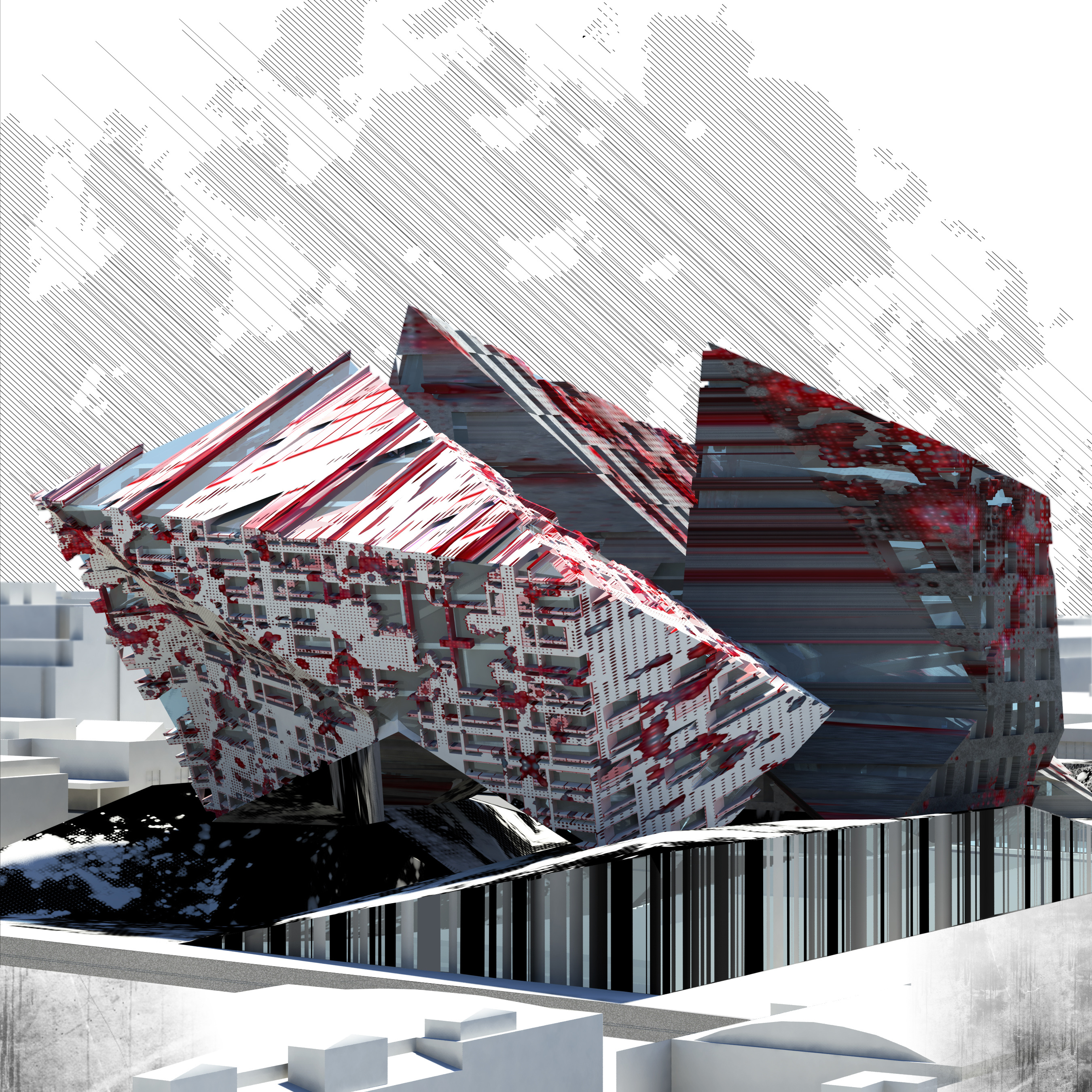
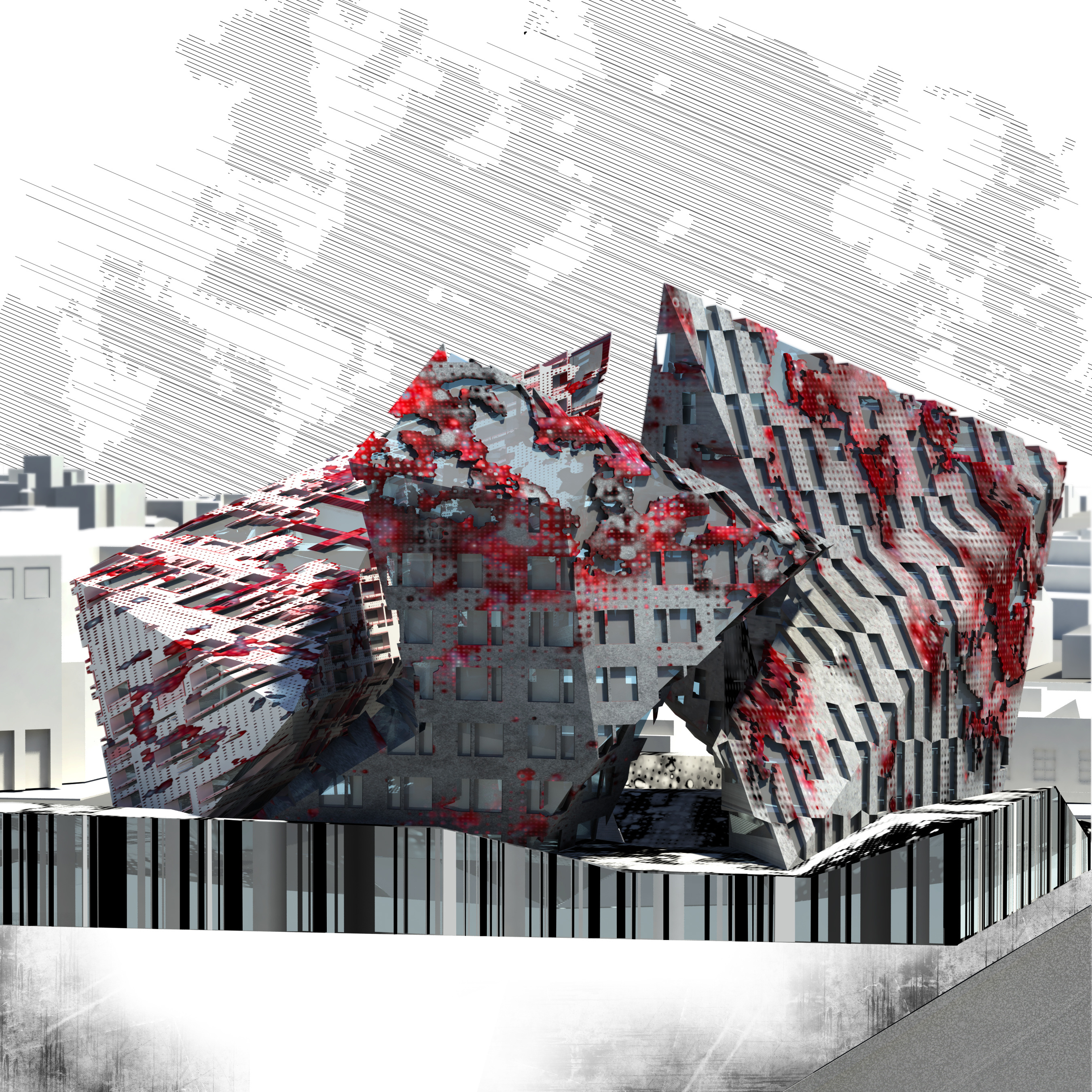
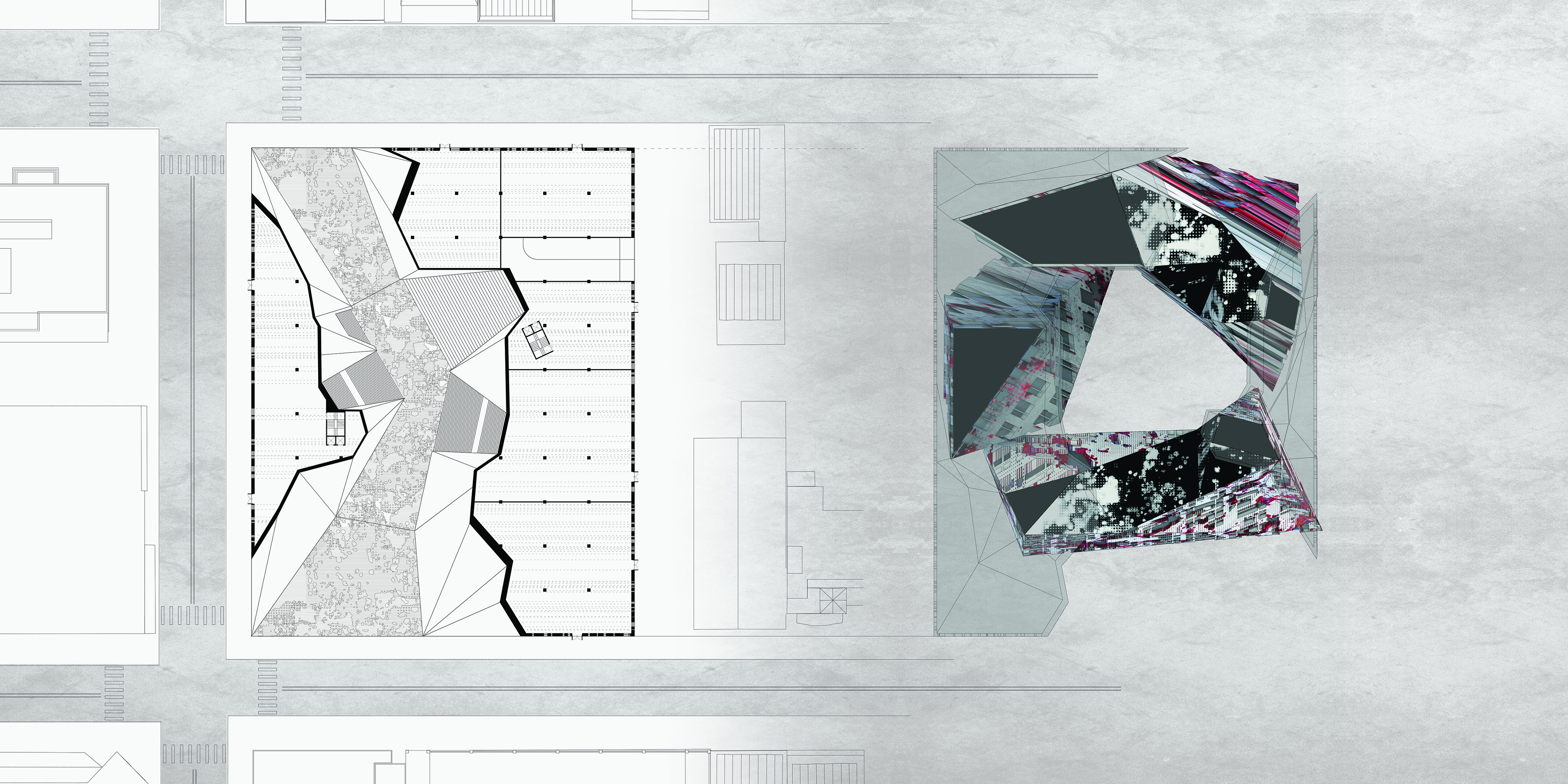

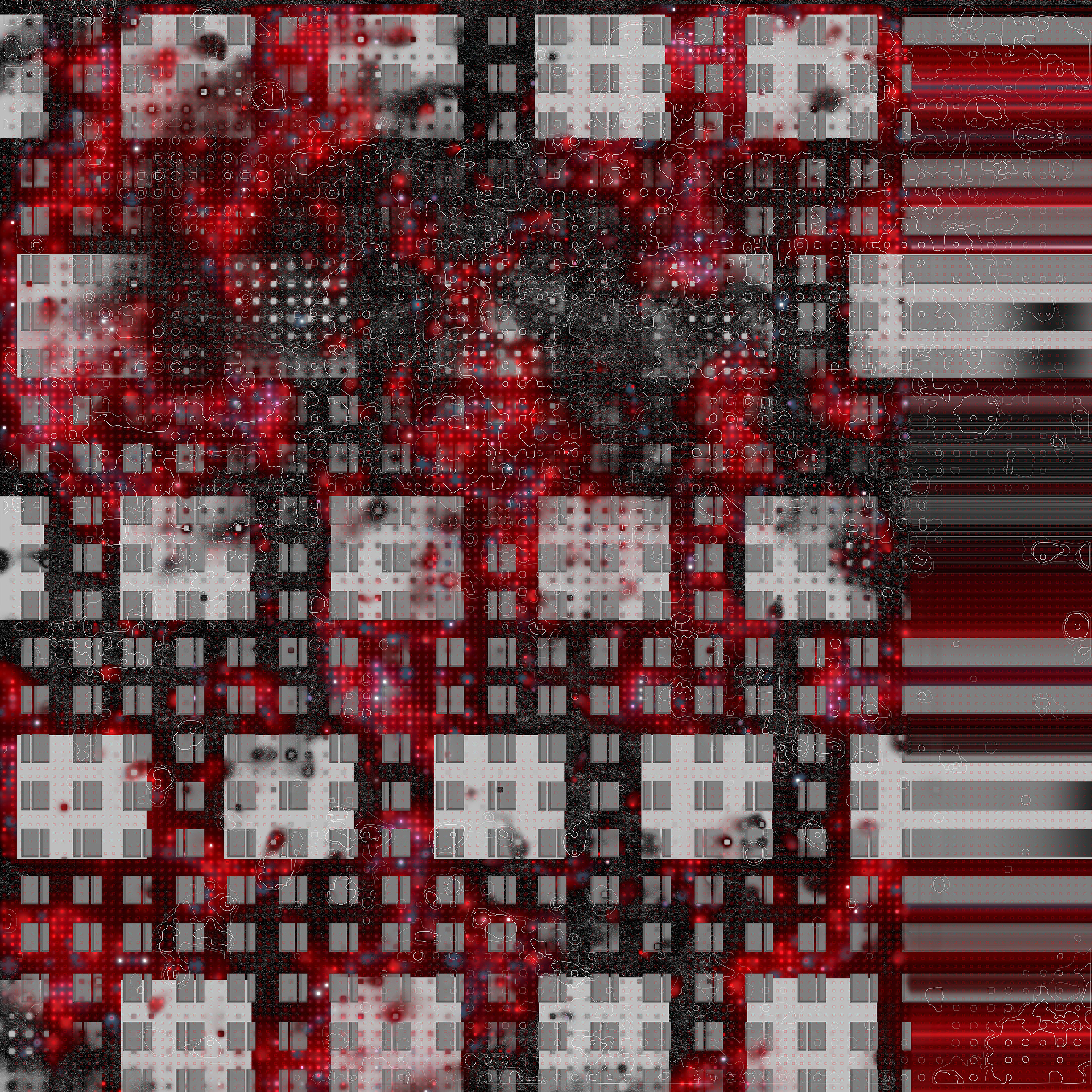
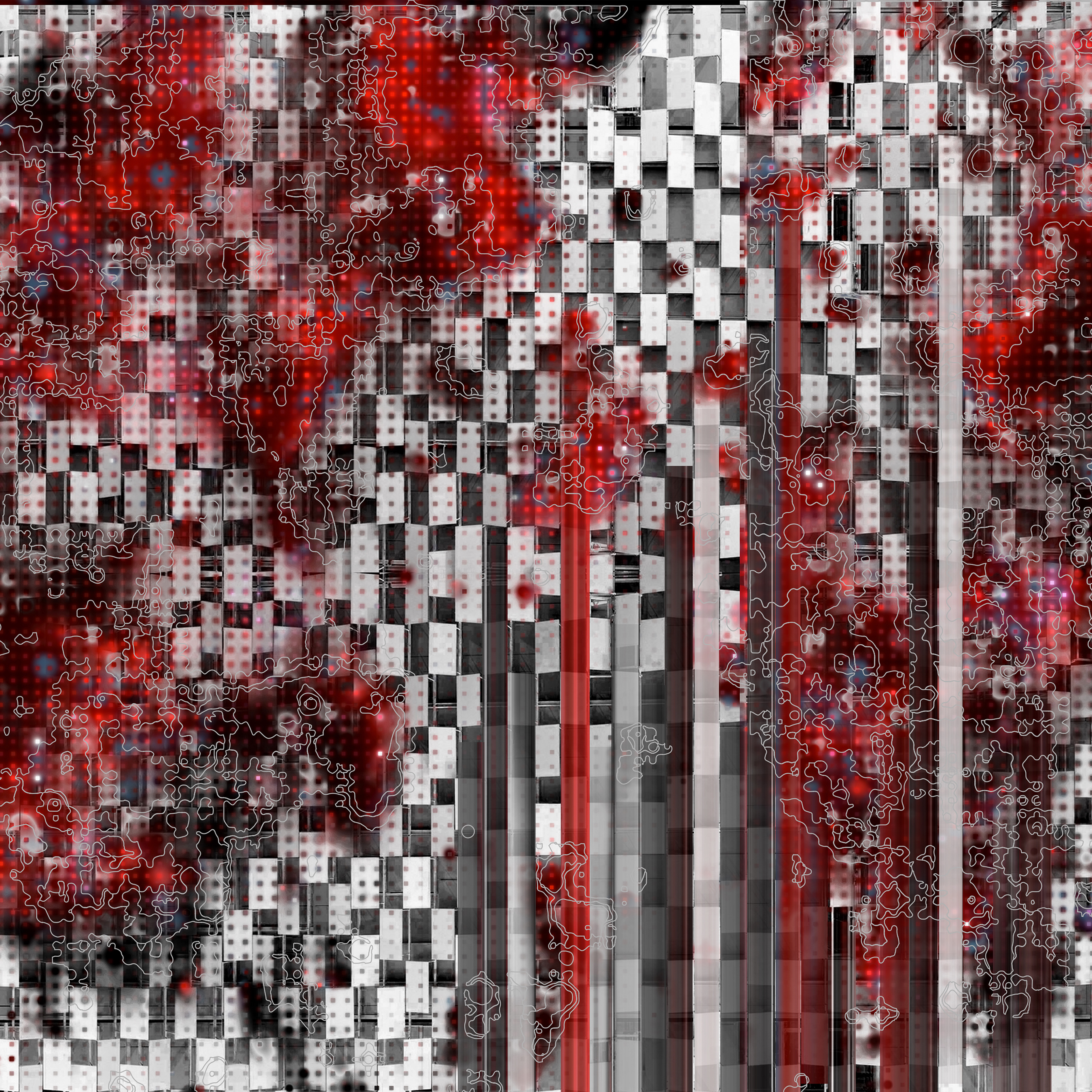

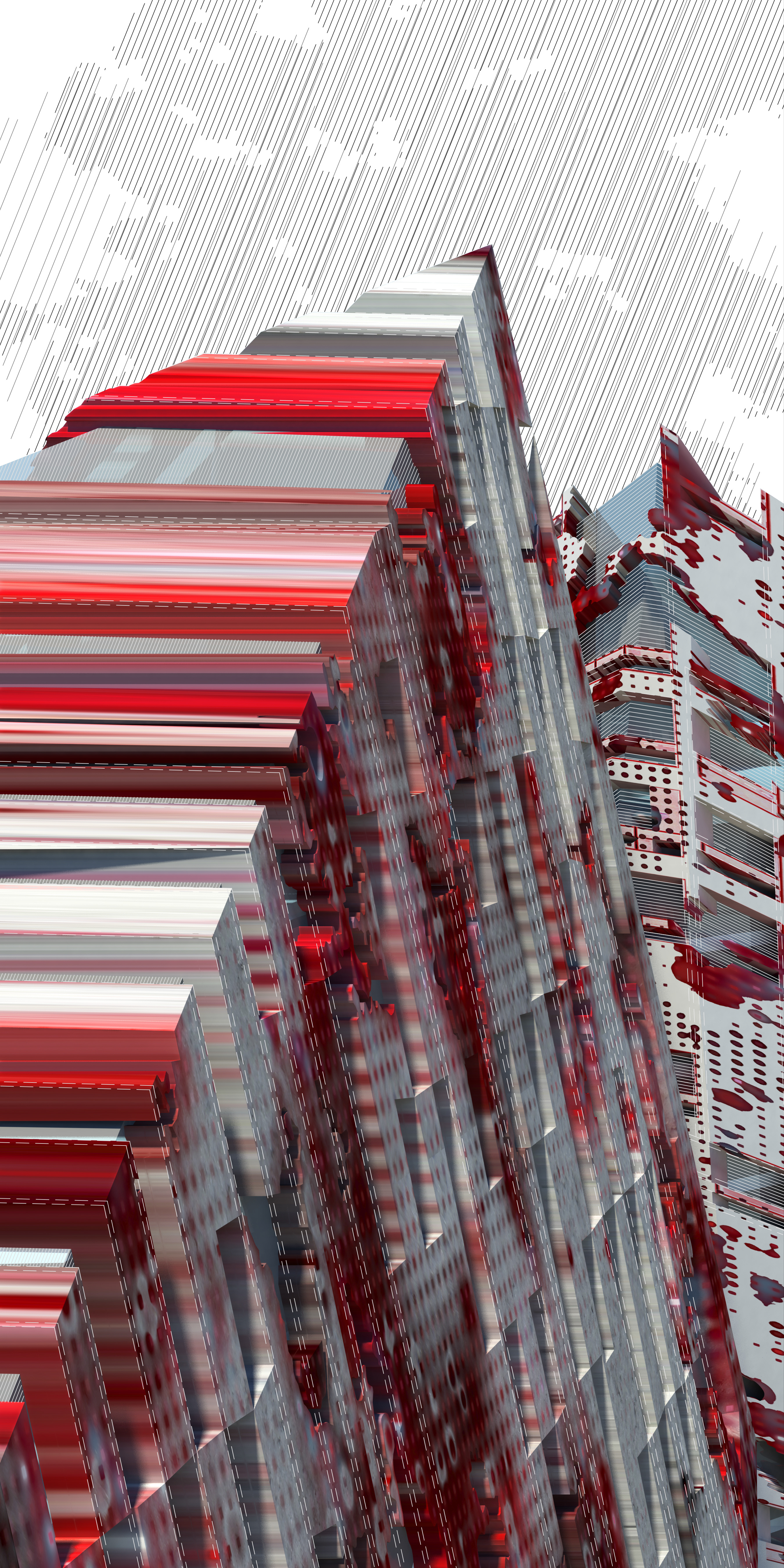
EXACT FORMS: ART THROUGH PROCESSING
The two and three dimensional design for this project were accomplished entirely in processing.
Studies of form and color within renaissance chiaroscuro paintings led to the design of multi-agent systems.
What began as a graphic composition was extrapolated into a script for three dimensional form generation. The resulting explicit figure implies envelope and spatial organization through an accumulation of ornamental density.
Critic: Casey Raes




